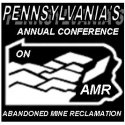Swatara Creek is a tributary of the Susquehanna River, which drains to the Chesapeake Bay. Dozens of species of fish that had not been present for decades returned to a 7-mile segment of Northern Swatara Creek as a result of improvements in water quality and stream habitat. Northern Swatara Creek was polluted by excess acidity, along with iron, manganese, and aluminum, that were leaching from abandoned anthracite coal mines. Pennsylvania listed the stream segment on the state’s 303(d) list in 1996 and subsequent listing cycles. Best management practices (BMPs) were employed to treat the abandoned mine drainage (AMD) and improve water quality. Before 1985 no fish were found in ecological studies conducted on the Northern Swatara Creek; however, in the past. Before 1985 no fish were found in ecological studies conducted on the Northern Swatara Creek. However, in the past decade, a gradual and steady increase in the number of fish species and individuals has been documented. In fact, annual studies since 1999 have confirmed that in all but 2 years more than 20 species of fish and more than 200 individual fish were living in the creek.
The Problem
The Swatara Creek watershed is located in Schuylkill, Lebanon, and Dauphin counties. The creek enters the Susquehanna River just downstream of Harrisburg, the capital of Pennsylvania. The Northern Swatara Creek watershed is in Schuylkill County. The creek flows through the southernmost area of the anthracite coal region of eastern Pennsylvania, an area that was heavily
mined through the late 19th and early 20th centuries. It is estimated that 25 square miles (67 percent) of the Northern Swatara Creek watershed is affected by AMD, and impairments in the waterbody must be addressed to meet water quality standards. As required by the Clean Water Act, a Total Maximum Daily Load (TMDL) was prepared for 11 creek segments due to impairments
noted in the 1996, 1998, 2002, and 2004 Pennsylvania section 303(d) lists of impaired waterbodies. The impairments were caused by high levels of metals (the three primary metals associated with AMD—iron, manganese, and aluminum) and, in some
stretches, precipitated solids.
Project Highlights
Starting in the early 1970s with a series of voluntary projects and enforcement projects that companies completed in lieu of fines, efforts have been under way to clean up coal silt and sediment ponds and stabilize the lands with high erosive potential in the watershed. The Swatara Creek Diversion Wells project, completed in 1995 adjacent to U.S. Route 209, raised the pH of the creek. This success built momentum with local stakeholders and helped form the Northern Swatara Creek Watershed Association. The diversion wells intercept the flow of the creek and increase its pH by 1 to 1.5 standard units through the addition of limestone.
Beginning in 1996, one or more water treatment projects have been implemented each year to address AMD pollution in the watershed. Monitoring and study have made the Swatara Creek effort one of the best-documented restoration projects in the country.
Since 1998, the creek has been the subject of a U.S. Environmental Protection Agency (EPA) section 319 National Monitoring Program project. A cooperative study effort undertaken by federal, state, and county partners resulted in the design of a treatment system for the Rowe Tunnel to address the discharge of the 3,000-gallon-per-minute flow that is the main source of the Lorberry Creek, a stream that flows into Northern Swatara Creek. The successful implementation of this and other projects has resulted in the gradual return of fish to Northern Swatara Creek in the town of Ravine just downstream of the portion of the watershed in the anthracite coal fields.
Results
The best indicator of improved water quality is the gradual shift of the benthic macroinvertebrate community from pollutant-tolerant species to more pollutant-sensitive species. In 1997 mayflies (a benthic macroinvertebrate in the Ephemeroptera order) once again began to be found in the creek in the springtime. Although mayflies are common in fisheries in more pristine areas of Pennsylvania, they had not occurred in Swatara Creek for perhaps a hundred years. In total, about 7 stream miles of the Northern Swatara Creek have dramatically improved water quality. As a result, the fish community has also rebounded. Twenty-four species of fish were documented in 2000, including coldwater species like brook trout and sculpin
and warm-water species like sunfish, pickerel, and bullhead catfish. Although most of the fish species are considered to have a moderate tolerance to pollution, several pollution-intolerant species, including river chub, cutlips minnow, and longnose dace, have been reported since 1997.
Partners and Funding
In total, more than $731,026 of section 319 funding has been used to address AMD and help to restore the Northern Swatara Creek, as well as to leverage in-kind services and money from other sources. More than $300,000 of Pennsylvania Department of Environmental Protection (PADEP) Abandoned Mine Reclamation Funds has been applied to water quality projects in the watershed. The U.S. Department of Energy, U.S. Geological Survey, and Office of Surface Mining have also funded projects.
A total of more than $9 million of Operation Scarlift, Bureau of Abandoned Mine Reclamation, and Growing Greener funds have been used in the Northern Swatara watershed. Schuylkill County Conservation District, Northern Swatara Creek Watershed Association, Eastern Pennsylvania Coalition for Abandoned Mine Reclamation (EPCAMR), municipalities, local industries and businesses, sportsman clubs, and private citizens have provided technical assistance, volunteer labor, and donations of funds and materials (excerpt from EPA Section 319 NONPOINT SOURCE PROGRAM SUCCESS STORY).
Reports on the Watershed:
TMDL Reports:
Lower Little Swatara Creek TMDL
Unnamed Trib to Swatara Creek TMDL
Operation SCARLIFT Reports:











